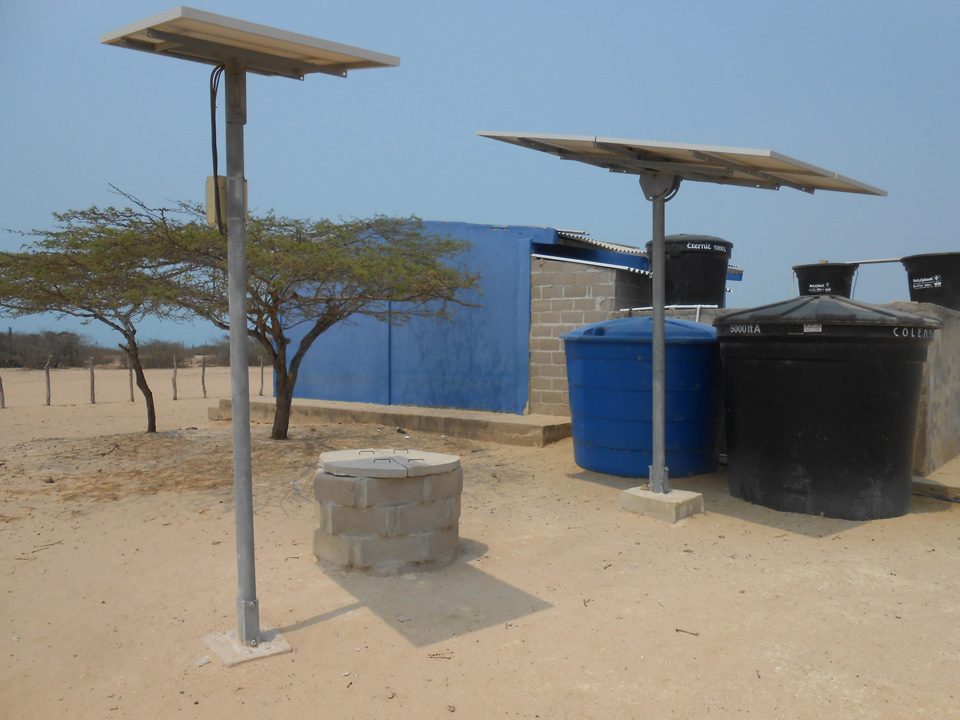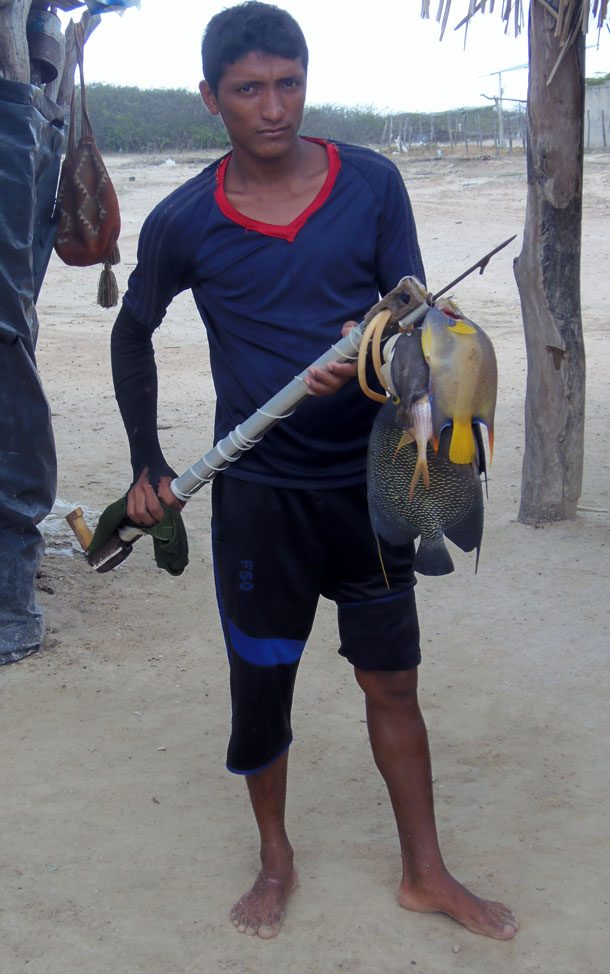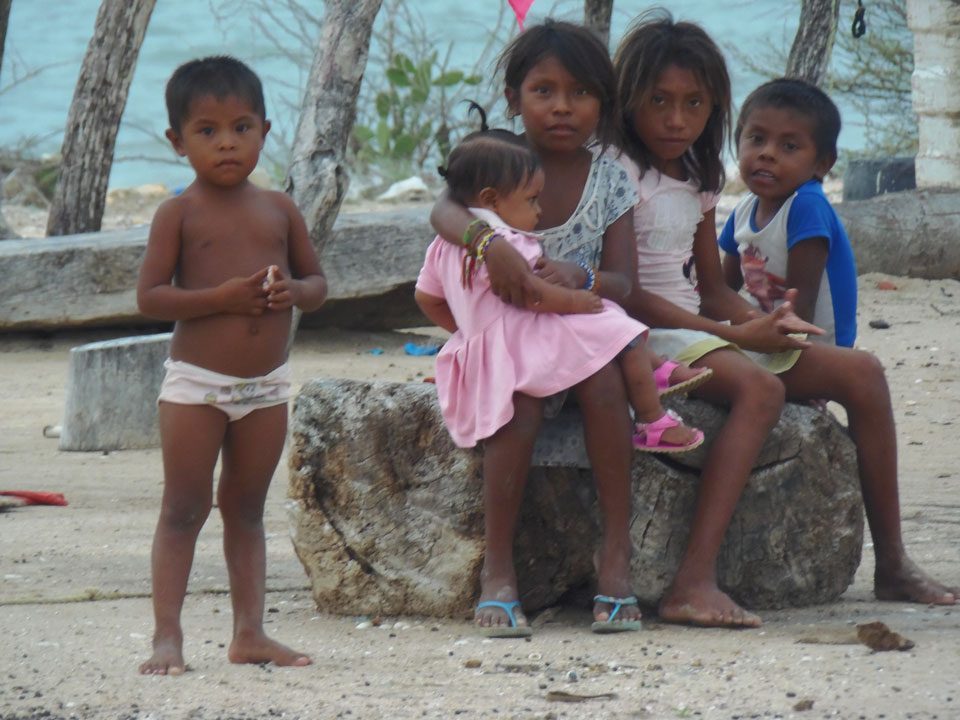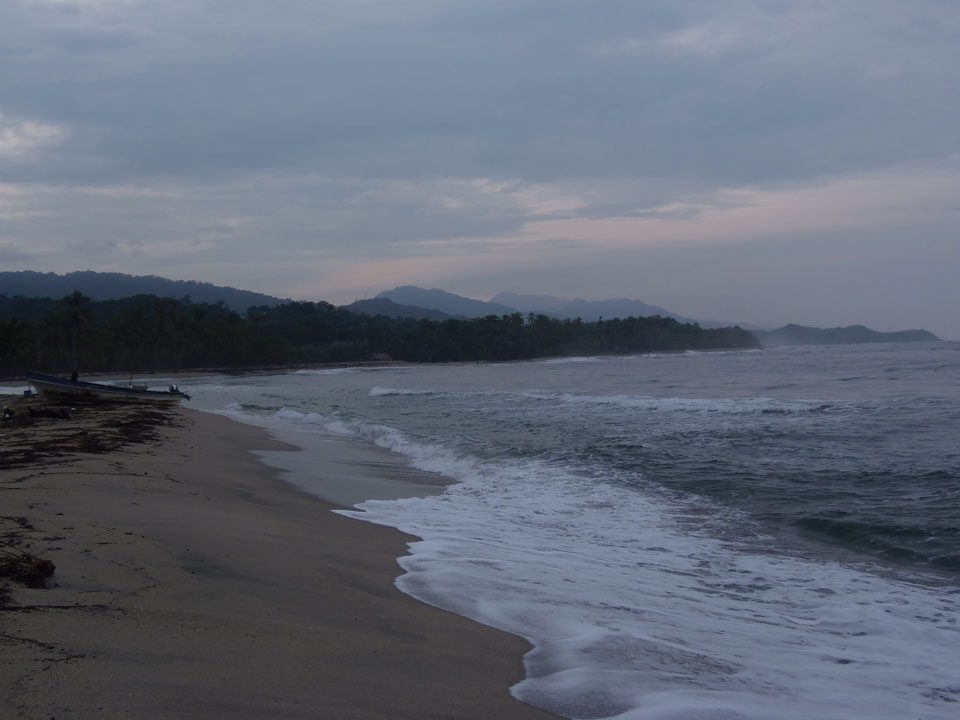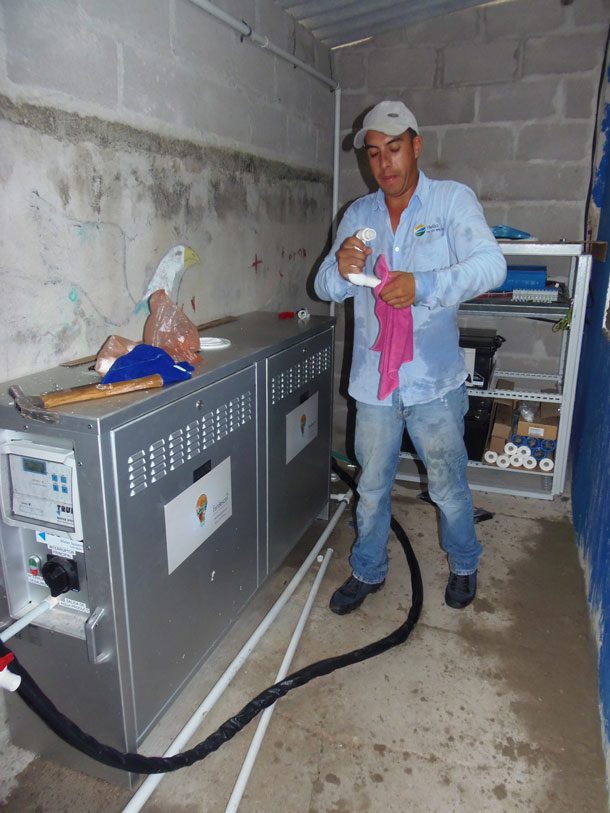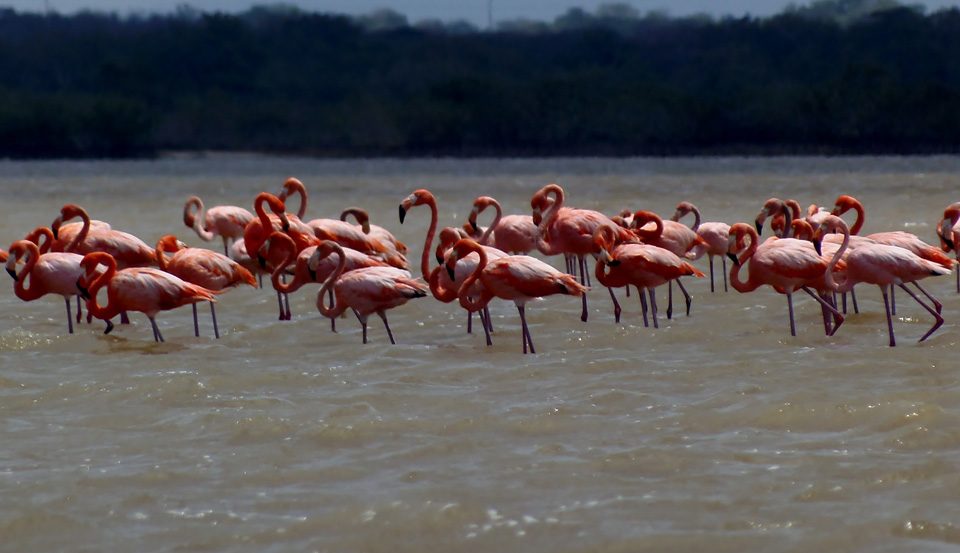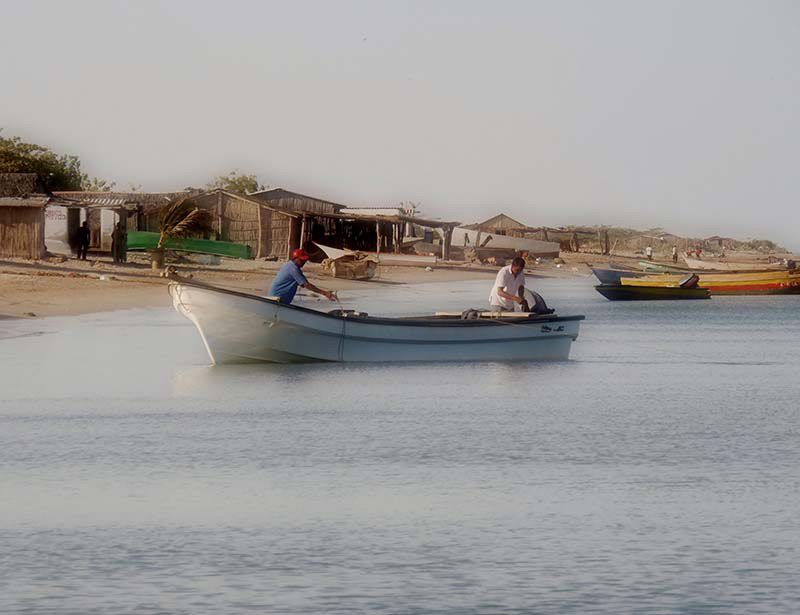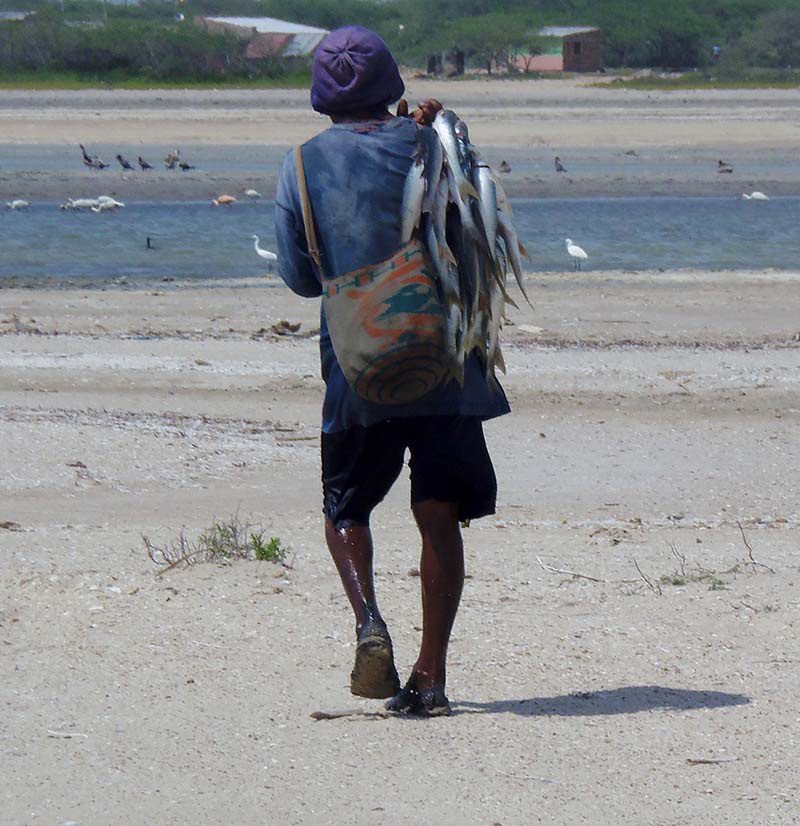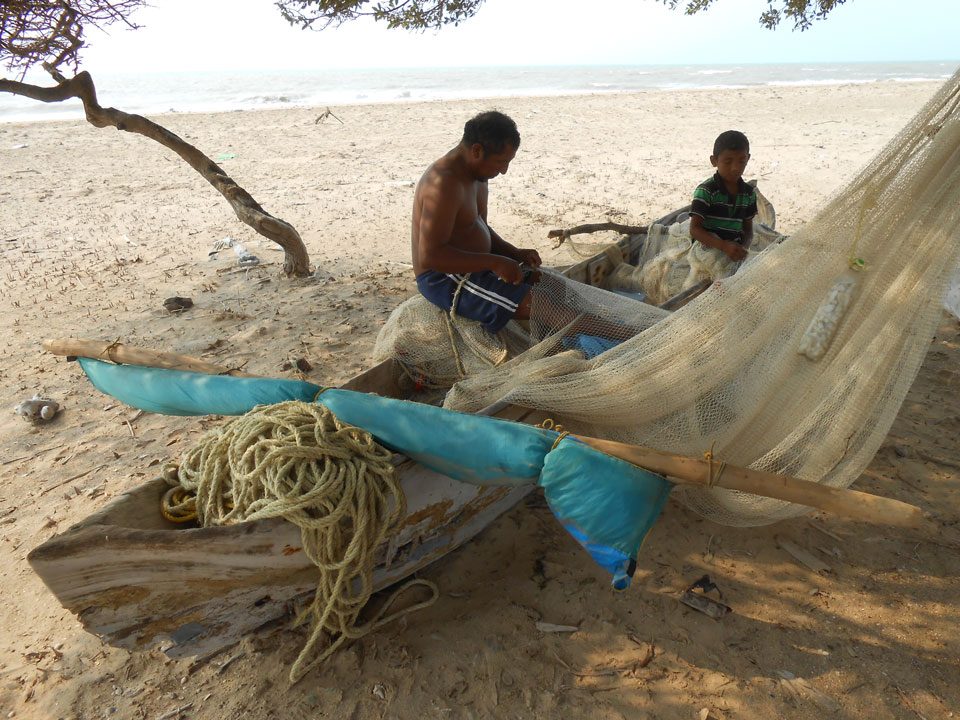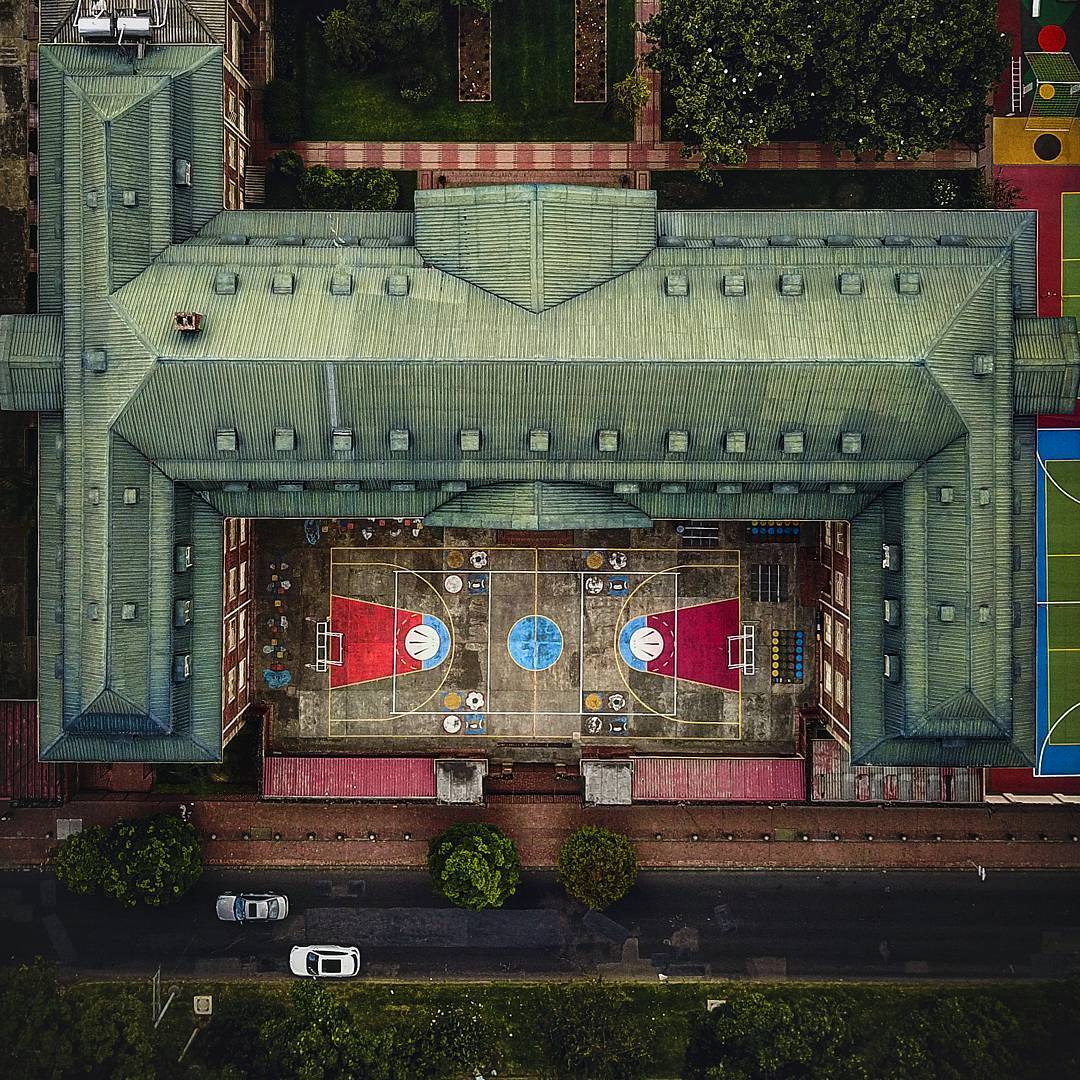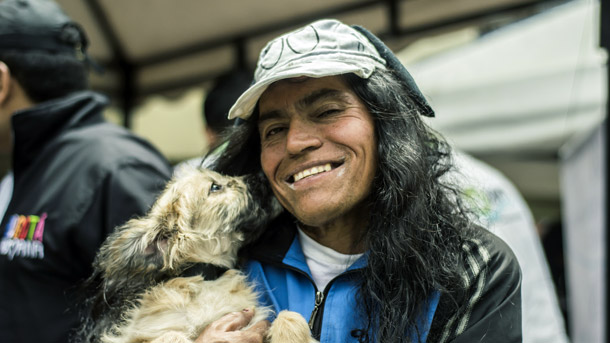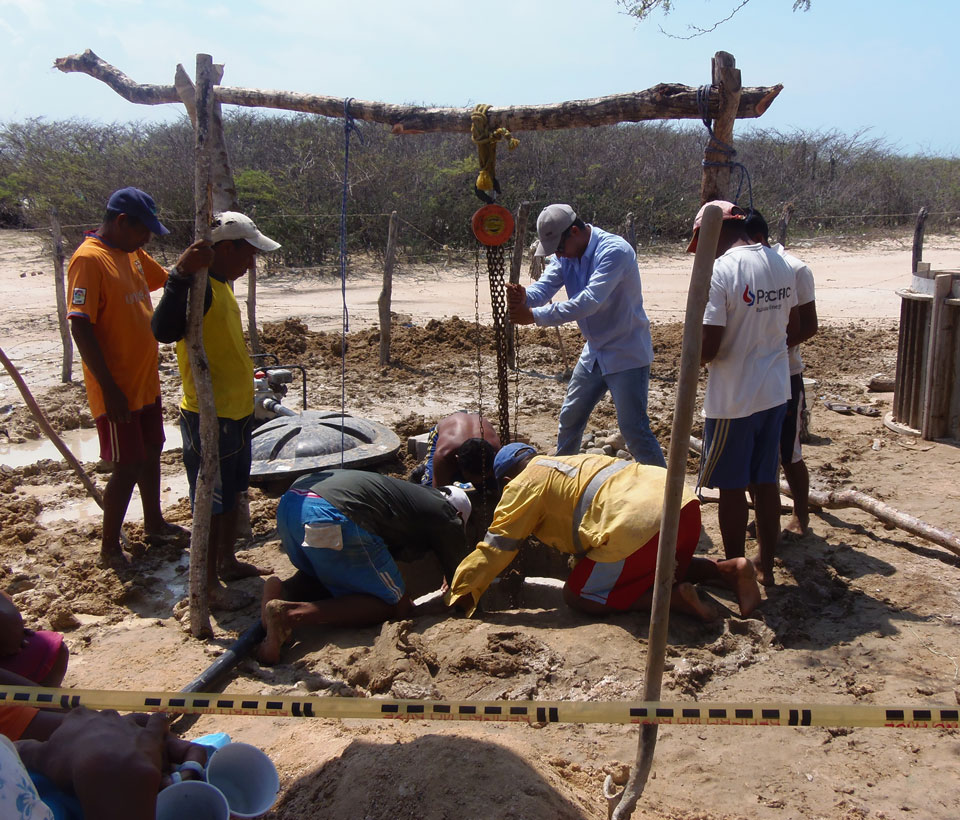
Villagers and members of Heliosyst work together to dig a well.
With La Guajira hit by severe droughts, Simon West visits a community that is harnessing the sun and the sea to provide water desalination to its people
It was during a three-week trip around Colombia in 2013 that David Harbord and his partner Lucía Martínez stumbled across Cale Calemana, a small fishing community perched on a peninsula in the country’s northernmost department, La Guajira.
The isolated ranchería – home to around 125 indigenous Wayuu people – was suffering badly amid a crippling regional drought. The lack of conventional energy sources and a decent water supply system meant the community’s survival rested on its traditional jagüeyes – artificial ponds that capture rainwater – and a beat up Honda motorbike used to collect bottled water from the nearby town of Camarones.
“It was just by coincidence that it was the first community we got to know”, says Harbord. “We were so impressed by the people and the place and their friendliness, but we were also struck by the extreme conditions they were living in. Their biggest problem was water, because even in that period their jagüeyes were running dry.”
Harbord, an LSE-trained economist with a background in energy development, was certain that Cale Calemana’s water supply problems could be solved by tapping into the community’s two biggest natural assets: seawater and sun.
Having decided to stay in Colombia, he and Martínez set up a foundation called Ferdescol, and after securing the necessary funds – “the most time-consuming part”, Harbord says – they hired Heliosyst, a Medellín-based water treatment specialist, to install a well and desalination plant powered entirely by solar photovoltaic panels. For the first time in its 100-year history, Cale Calemana had access to a reliable source of potable water.
“The plant has helped the community so much”, says Chendo, the elected leader of Cale Calemana.
“The houses have five containers every day, and there’s no need to drink from the jagüey. And the children, yeah. Before, the jagüeyes would give them the shits, they would get cramps. But thank goodness, because of the plant, all those problems have finished.”
The desalination system – which uses reverse osmosis, a technique whereby high pressure is applied to pre-treated seawater, forcing it through semi-permeable membranes to produce clean and safe drinking water – is completely self-sufficient, and requires just occasional maintenance.
“There are basic tasks that the community themselves can do, for example changing filters”, says Mauricio Hincapié, Heliosyst’s technical manager. “They don’t need tools or any other specialised equipment. They’ve been trained from the very beginning, and to date it has worked well.”
The desalinated water, which Chendo proudly boasts is the purest in La Guajira, is stored in tanks that the community draws from twice daily. The system runs for ten hours a day, and can produce up to 800 litres of water, or around six litres per person, enough to meet basic drinking and cooking needs.
- Solar panels that drive the desalination plant.
- Fish has become the staple diet and only source of income for the people of Cale Calemana.
- Wayuu children have been seriously affected by the long drought with many dying of malnutrition.
- Despite its exquisite natural beauty, La Guajira has been one of the worst affected parts of the country in the long running drought.
- A Heliosyst technician maintaining one of the desalination units.
- Laguna Grande was once a sanctuary for pink flamencos, which the community hope will offer an attraction for eco-tourism when the rain comes and the birds can return.
- Fishermen attending to their gear before heading out to sea.
- A Wayuu fisherman walks back to the village with his catch.
- The village has drinking water and fish, but still struggles as the drought has made it impossible to farm the nearby land.
The plant has been operational for 18 months, and has given Cale Calemana a safeguard against the extreme deprivation that has struck so many other communities in the region. The extended period of drought has decimated large swathes of northern Colombia, and the Wayuu – the country’s largest ethnic indigenous group – are suffering nothing short of a humanitarian crisis. According to a report filed last year with the Inter-American Commission of Human Rights, some 4,470 children have died in the region over the last eight years due to the lack of food and water.
Corruption, mismanagement and the use of scant water resources by agricultural and mining companies have exacerbated an already desperate situation.
“The real cause of this problem is government abandonment of the Wayuu. Despite numerous promises, the national and La Guajira governments have done little or nothing to resolve the water problems of these communities”, Harbord says.
The effects of the drought are also being felt in Cale Calemana, despite their new desalination plant and a fairly healthy but unchanging diet of sea bass and rice. The community used to earn its income through cultivating crops such as yucca, beans and corn, and shrimp fishing in the nearby Laguna Grande saltwater lake.
“Right now the lake is dry, which means we have no source of income”, Chendo says. “You can see we haven’t had one drop of rainwater. The fields are dry so we can’t sow, we don’t have crops, we have hardly anything because of the shortage.”
Nor does the community have enough water to maintain their chivos. For the Wayuu, goats are an important sign of social status, and are used as a food source, a bartering tool and even as dowry payments.
“In the past, you’d have 700, 800 chivos”, says Chendo. “But they’re now dying because of the drought. Each corral has maybe 22 chickens and three chivos. We used to sell the chivos for food, but now no, now times have changed, now we just fish. We sell some of what we catch, the rest we eat.”
Given the stunning natural beauty and abundance of wildlife in the region, one possible route to a more secure future for Cale Calemana is eco-tourism. Laguna Grande is home to the Santuario de Fauna y Flora Los Flamencos – a spectacular gathering place for thousands of flamingos.
“Our medium-term plan is to help the community develop eco-tourism there based around the flamingos. At the moment it’s difficult – the weather’s been extreme and the flamingos haven’t been around very much. But they’ll be back,” says Harbord.
Until now, Ferdescol has only had the resources and time to work with Cale Calemana and a few nearby villages. Ideally, the foundation would also be active in more inland communities that Harbord says are in “desperate straits”.
“Those would be projects to dig wells and install solar pumps, that’s what they need in those communities. We really want to expand our activities and do more.”
You can find out more about the foundation’s work in Colombia at Ferdescol.org.
By Simon West / Photos: David Harbord, Ferdescol

